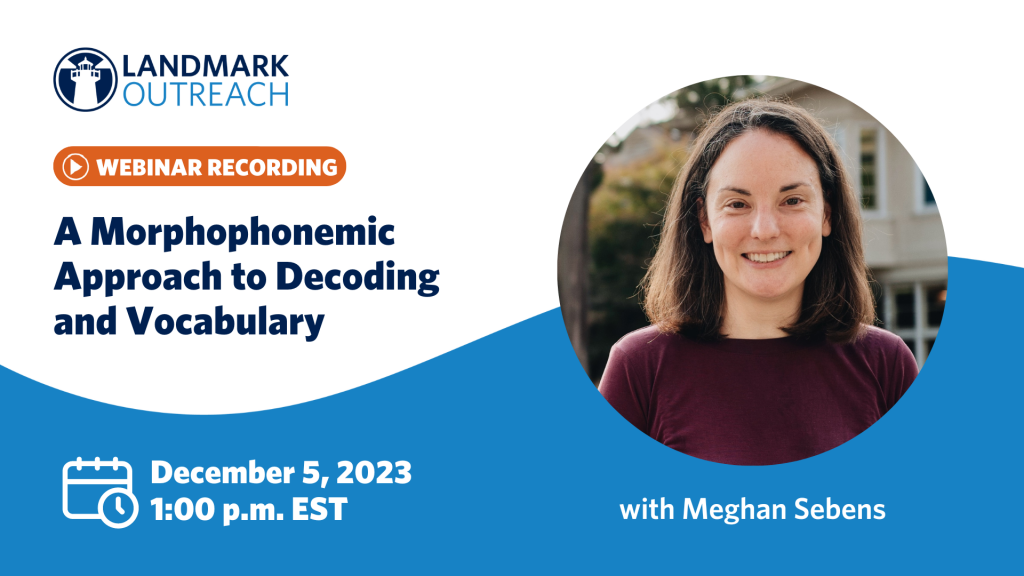Stocking Students’ Backpacks for Reading Comprehension
The start of the school year often begins with the gathering of supplies. Students arrive with backpacks filled with pencils, notebooks, binders, and folders – all the tools they’ll need for success. In the same way, students’ minds need to be stocked with the right metaphorical supplies to access and comprehend text.
Picture two backpacks. One is neatly organized and color-coded, every item in its place and easy to find. The other is a jumble of mismatched pieces: scattered pens, a broken binder, and a spoon from last year’s lunch.
Which student will complete their work more efficiently? Which will struggle to find what they need?
Like the school supplies that stock a complete and well-organized backpack, background knowledge and vocabulary are two of the key components that provide students with the ability to comprehend reading material. Students may not come into our classrooms with a full set of supplies, or they may need to better organize the ones that they have.
Background Knowledge
Just like the fully stocked backpack, a reader’s background knowledge and vocabulary serve as essential tools for understanding. Some students may enter the classroom with fewer of these tools, or with them in disarray. Our job as teachers is to help them fill and organize their backpacks for reading success.
Background knowledge has been shown to powerfully contribute to reading comprehension. In fact, students with strong background knowledge but weaker decoding skills have been able to outperform peers who decode fluently but have little knowledge about the topic (Recht & Leslie, 1988).
This doesn’t mean we should prioritize background building over decoding, but it does remind us that knowledge fuels comprehension. Students bring varying degrees of familiarity, and sometimes misconceptions, to any given topic, and by frontloading essential information and helping them build accurate, connected schemas, we set the stage for deeper understanding and engagement with text.
Vocabulary
Vocabulary is a major predictor of a student’s current and future comprehension (Adlof & Perfetti, 2014). While we can’t control how extensive a student’s vocabulary is when they arrive, we can expand and strengthen it through both direct instruction and incidental exposure.
Explicit instruction helps students build multiple layers of word knowledge to support vocabulary acquisition and usage, while incidental learning occurs through rich classroom talk, read-alouds, and discussions. Even monitoring our everyday language as teachers shapes students’ word learning (Lesaux).
Packing for Success
When we intentionally build background knowledge and vocabulary, we help students organize the tools they need to understand text. Over time, their backpacks, once half-empty or disorganized, become equipped, ordered, and ready for use. With those tools in hand, our students can approach reading with confidence and comprehension.
References
Adlof, S. & Perfetti, C. (2014). Individual differences in word learning and reading ability. Handbook of Language and Literacy: Development and Disorders, 246-264. New York, NY: Guilford Press.
Catts, H. & Kamhi, A. (Winter 2024-2025). Differentiating Comprehension from the Components of Reading. American Educator, 48(4), Retrieved from: https://www.aft.org/ae/winter2024-2025
Hart, B. & Risley, T. (1995). Meaningful Differences in the Everyday Experience of Young American Children. Baltimore, MD: Paul H. Brookes Publishing Company.
“A Matter of Talk: Nonie Lesaux.” Reading Rockets, 2025, www.readingrockets.org/videos/meet-experts/matter-talk-nonie-lesaux. Accessed 1 Jul. 2025.
Recht, D. R., & Leslie, L. (1988). Effect of prior knowledge on good and poor readers’ memory of text. Journal of Educational Psychology, 80(1), 16–20.



